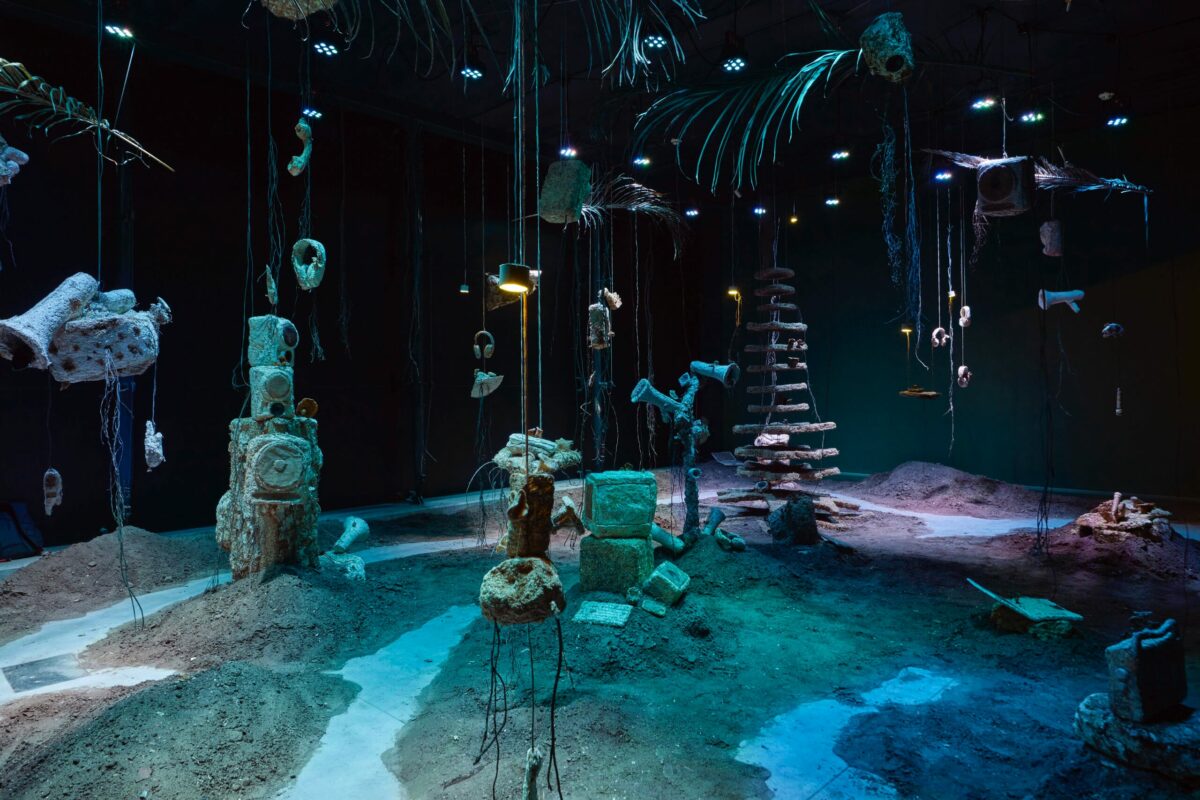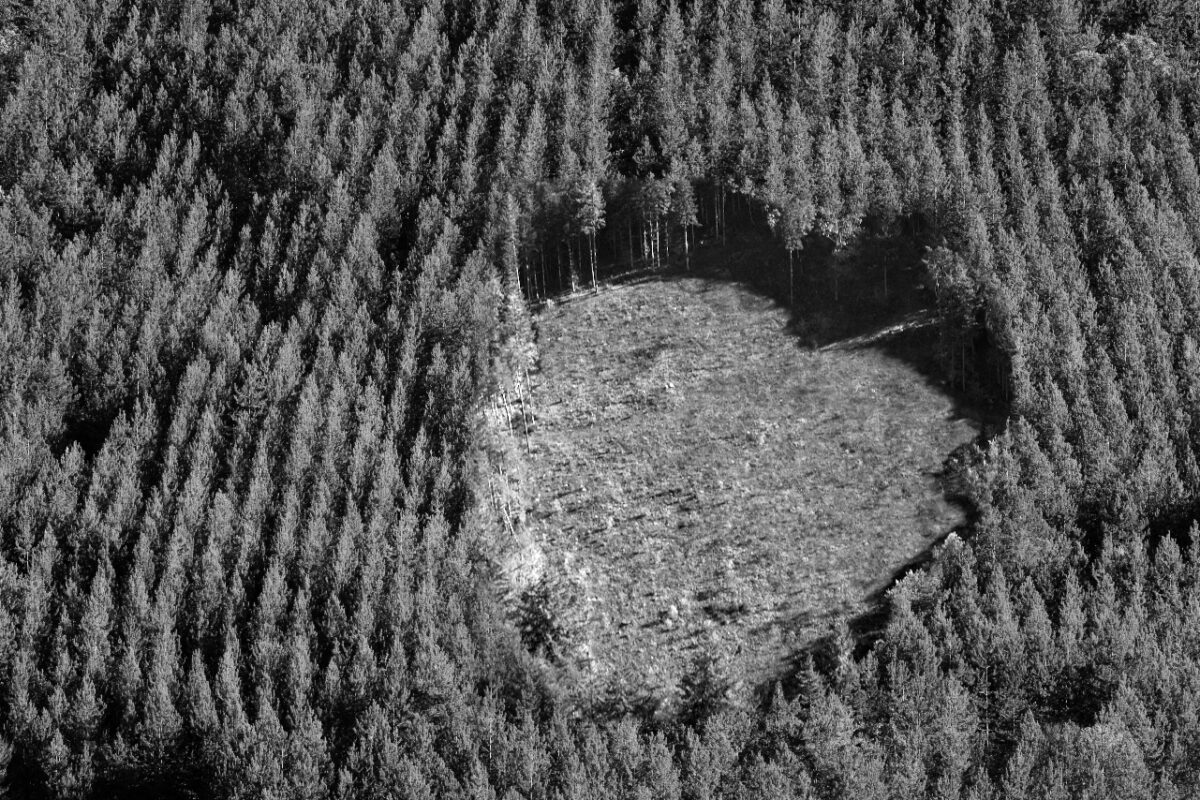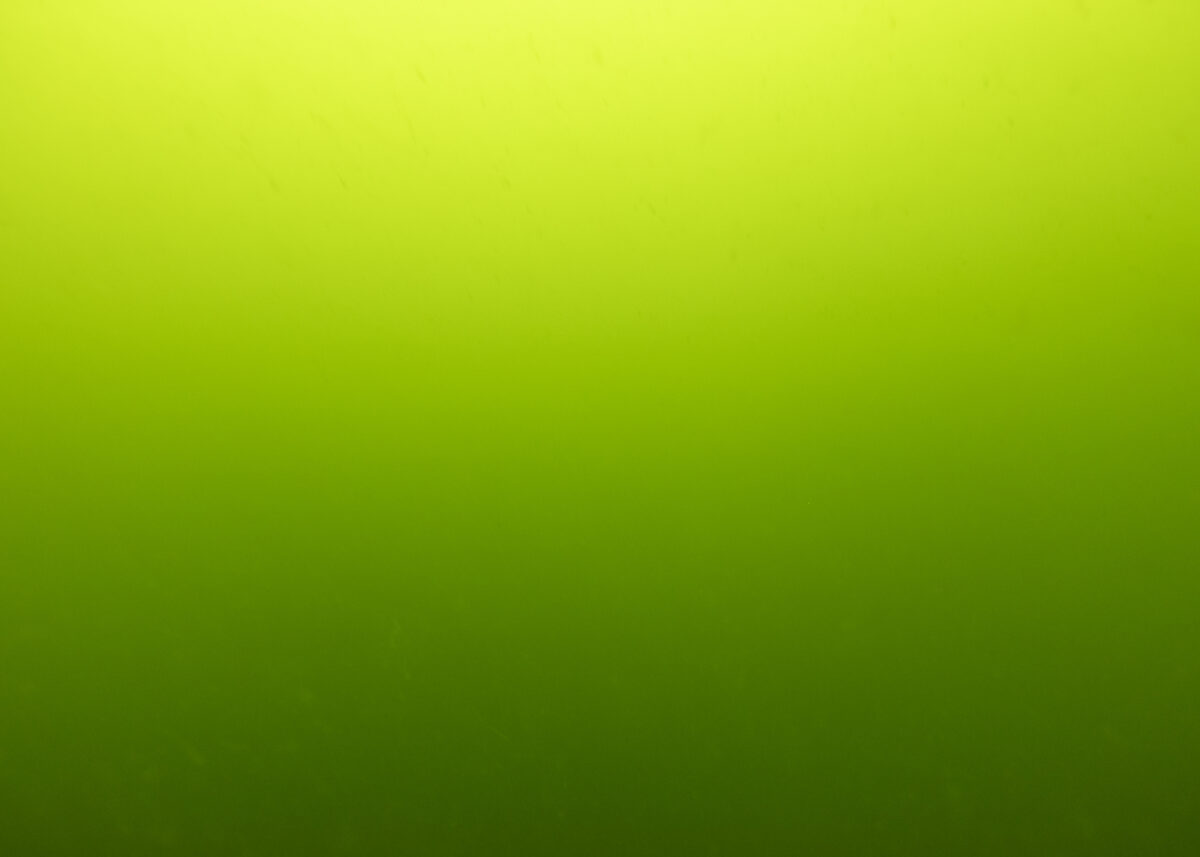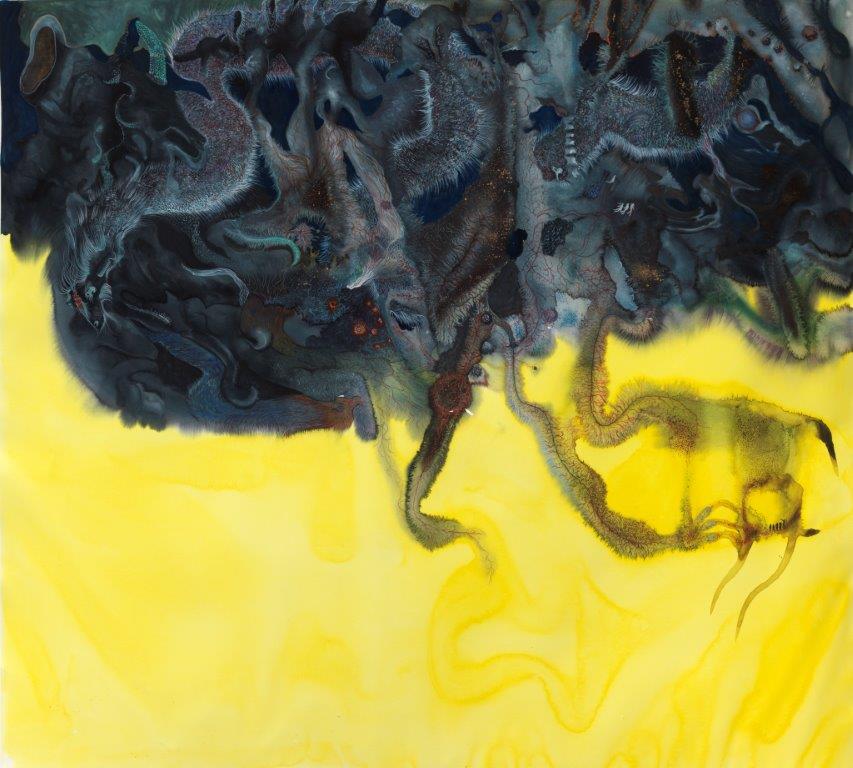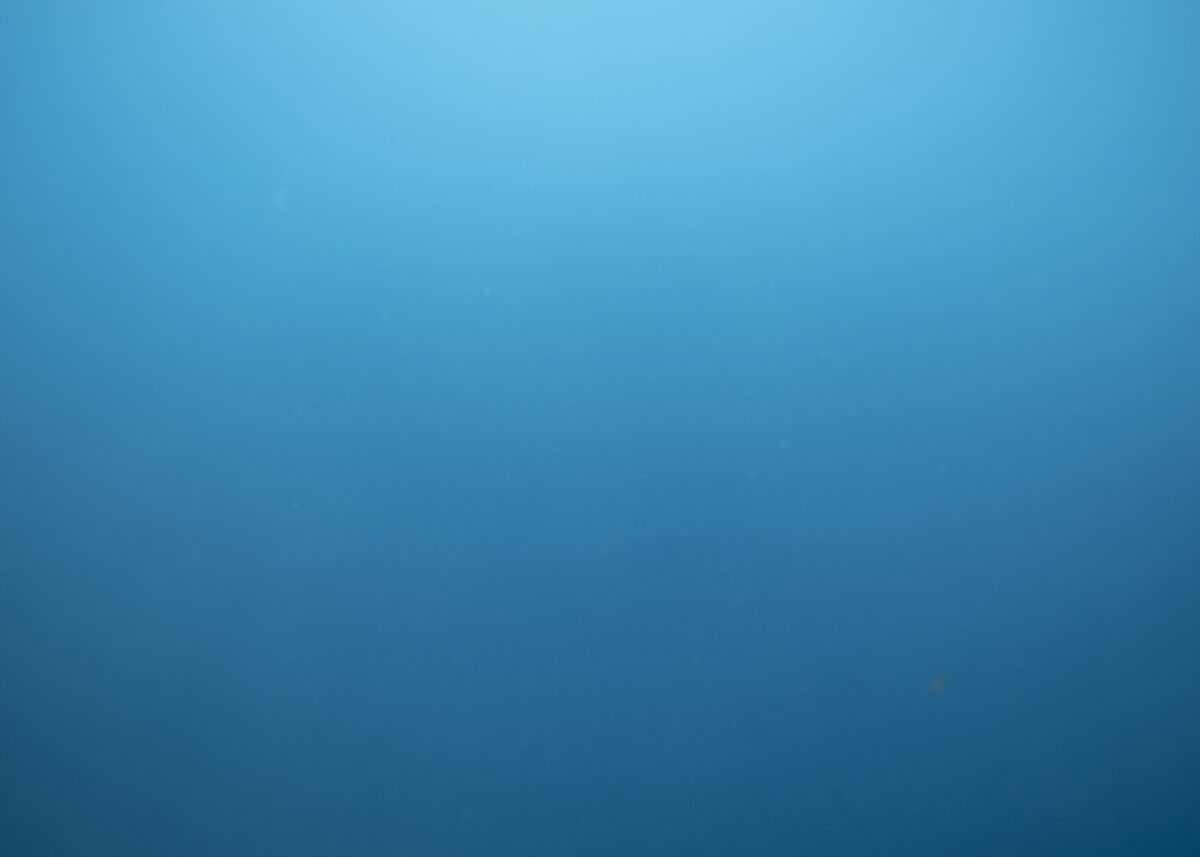
CALL FOR PROJECTS COAL PRIZE 2025: Freshwater
The COAL Prize 2025 dedicated to fresh water is a call to fight against the drying up of our sensitivities…
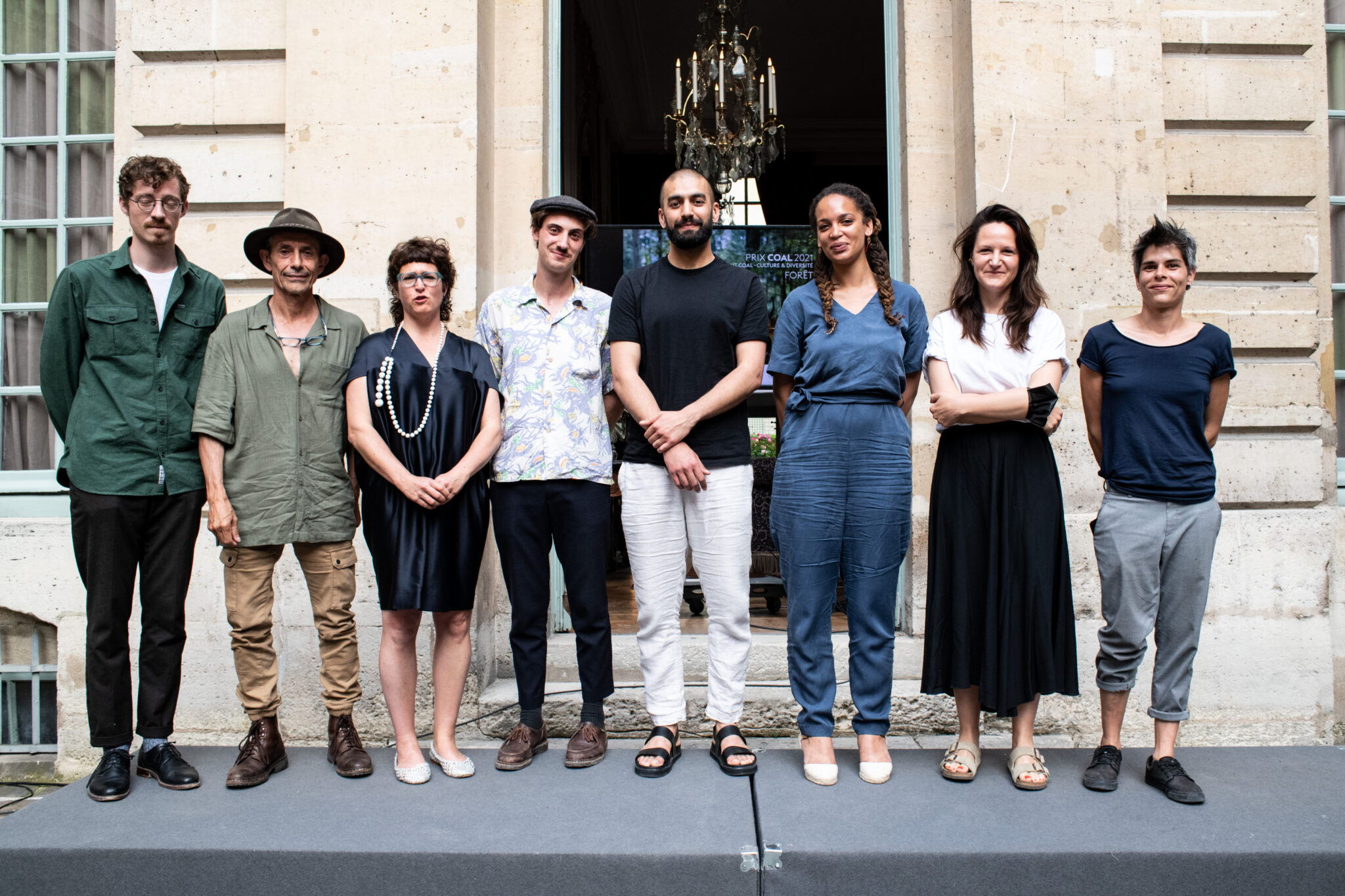
The collective FIBRA was awarded the COAL Prize yesterday for its project Desbosque: desenterrando señales. A special jury prize was also awarded to Erik Samakh for his project Zones de bruit. The prizes were awarded at a ceremony held at the Musée de la Chasse et de la Nature in Paris, in the presence of the nominated artists and members of a jury of experts in art, ecology and research, chaired by Christine Germain-Donnat, director of the Musée de la Chasse et de la Nature, and Joëlle Zask, philosopher.
Image credits: © Julie Bourges
Published on 18 June 2021
This edition of the COAL Prize dedicated to the forest echoes the first edition of the Nuits des Forêts, a festival for the general public that will be held on July 2, 3 and 4. Supported by the COAL association and FIbois France, the forest and wood interprofessional organization, the Nuits des Forêts aims to raise awareness of the forest crisis and the challenges of forest management, and to promote new relationships with the living world through artistic and sensitive experiences, on the scale of each territory.
Thirteen million hectares of forest disappear each year, under the pressure of agriculture, overgrazing, timber exploitation, and urbanization; entire sections of the forests of Amazonia, Australia, and sub-Saharan Africa burn while others die on the ground under the effect of global warming, thus depriving the fauna of its natural habitats. All over the world, people are fighting to defend these reserves of life and culture and to make them the models for new worlds to be built. Vital for the global balance of ecosystems, the forest is equally vital for human societies that, for thousands of years, have lived directly or indirectly from its resources.
In a few decades, the forest has become the symbol and the point of convergence of covetousness, environmental disasters and struggles that are shaking the contemporary world in crisis. The COAL 2021 Prize promotes artists who reveal the richness of the forestto feel and experience the ecological balance of the forests, to promote the diversity of beings and cultures that inhabit them, to revive their ancestral knowledge and give birth to new ones, to nourish the movements of resilience that they inspire, to act with their protectors and to invent other ways of being together in the woods.
The members of the jury actively deliberated ” I would like to greet all the artists who have been selected tonight and whose projects we have discovered with great joy, great attention, and sometimes also great emotion “Christine Germain-Donnat, director of the Museum of Hunting and Nature, summarizes.
” With this work, we have a very avant-garde voice for the problems of today, but especially of tomorrow, and at the same time an artistic sensibility that makes them deeply shareable. The forest really appears as a subject-object and each of the artists presents herself as a partner of the forest at the same time as her pupil and her master “said Joëlle Zask, philosopher.
PRESENTATION OF THE WINNING PROJECT DESBOSQUE: DESENTERRANDO SEÑALES BY THE FIBRA COLLECTIVE (PERU)
The department of Ucayali, in the heart of the Amazon, is one of the densest forest areas in Peru and today also has one of the highest deforestation rates in the world due to illegal logging, land trafficking, palm oil and oil settlements. In 2019 alone, the area of forest lost would be equivalent to 67360 soccer fields.
In the heart of this forest, an oil palm plantation is currently ravaging the ancestral lands of the indigenous community of Santa Clara de Uchunya. The Peruvian collective Fibra went to the place to meet its people and their underground stories. Because under the forest floor, plants, trees and fungi connect to each other to form vast mycorrhizal networks of communication and exchange: a “wood wide web” much older than the Internet.
Desbosque: desenterrando señales (“deforestation: unearthing signs”) summons this complex and living network through an immersive and organic installation, populated by mycelium sculptures. Molded into forms of human communication tools such as megaphones, radios, televisions, they disseminate recent data on deforestation in Ucayali department. The dialogue that takes place is an inter-species exchange, between the mushrooms and the disappeared trees, between the forest and its inhabitants, transforming the exhibition space into a living organism that palpitates with the same frequency as the deforestation.
By drawing on underground networks, the collective represents the invisible links between life in the forest and the actions of urban dwellers in the city, and thus highlights the causes and the intersecting social, political, cultural and economic impacts of deforestation.
” It is very important for us to talk about the struggles of the community while including their voices. Our conversation is through art. We talk with humans, non-humans, on the spot, locally, with women but also with the forest which is our partner and which helps us to communicate or to make our objects of communication communicate which do not communicate at all. “Collective Fibra, Winners of the COAL 2021 Prize
Fibra Collective (Peru)
Gabriela Flores del Pozo, Lucia Monge and Gianine Tabja, born in Lima, Peru.
Fibra colectivo is a Peruvian women’s art collective founded in 2019 by artists Gianine Tabja, Lucia Monge and Gabriela Flores del Pozo. In their work, knowledge production is thought of as a collaborative and interdisciplinary process that blends research methodology, disciplinary knowledge, traditional knowledge and artistic practices. “We weave our practices and thereby strengthen ourselves, through each of our fibers we connect and exchange in and with our environment.” Their approach through collaboration and ecology leads them to explore and use sustainable materials sometimes involving co-creation with other species. In 2021, the collective presents an exhibition at the Museum of Contemporary Art in Lima.
PRESENTATION OF THE NOISE ZONES PROJECT BY ERIK SAMAKH,
WINNER OF THE COAL 2021 SPECIAL JURY PRIZE
Intensive tree monocultures (large-scale plantations, usually of exotic trees of the same species and age) have serious ecological repercussions that are increasingly being criticized. But the impacts of these tree fields are also sensory: visual, olfactory and especially auditory.
Continuing his series of “biotic operas”, Erik Samakh, with Zones de bruit, develops a protocol for managing and transforming coniferous plots of land into monocultures with the aim of allowing a mixed forest and biodiversity to develop as naturally as possible. First, he creates a clearing by “clear-cutting” a defined area of this monoculture, in collaboration with local logging companies, nature conservation associations, art school or forestry school students. Then it will be a matter of letting the pioneer plants take over their territory while methodically regulating the demographic pressure of the conifers. The result will be a natural contrast, both plastic and sonorous, between the artificial plantations and the emerging mixed forest. As soon as the recolonizing plants appear in the light of the clearing, insects, reptiles and birds move in, as well as small and large mammals. It is then possible to listen to the “noise” of the area.
Like the holes Gordon Matta-Clark made in his time in the abandoned territories of cities, which revealed urban absurdities, coupled with a questioning of the notion of property, Erik Samakh opens perspectives in the landscape by creating inserts of noise in monoculture spaces whose artificial character he reveals. The territory thus metamorphosed acquires a new status and becomes a work of art.
” My daily life is in the middle of woods, brambles, deer and bees and I improve a nourishing forest every day. With Zones of Noise, I propose to transform areas of silent forests into areas of noisy forests, areas in which biodiversity reigns. The status of the modified plots then changes to become works of art. What will happen if hundreds of hectares become works of art? “Erik Samakh.
Érik Samakh (France)
Born in 1959 in Saint-Georges-de-Didonne, France. Lives and works in the Hautes-Pyrénées, France.
Living for almost twenty-five years in the middle mountain forest, Erik Samakh presents himself as an “artist-hunter-gatherer”. His entire work is born of a constant dialogue between man and nature. Attentive to its sounds and noises, to its colors as well as to its different kingdoms, he acts as a surveyor. For thirty-five years, he has been capturing, recording and restoring what constitutes for him a real plastic material that he installs and diffuses in as many places suitable for discovery. He intervenes in particular in the landscape and makes it react, by grafting various instruments of his invention on it. After the Hautes-Alpes, it is the Hautes-Pyrénées that he has chosen to develop his laboratory on twenty hectares, an open-air workshop, a matrix nourishing forest and conservatory of his research. Many of his works have been performed on natural sites such as regional parks or geological reserves.
JURY 2021
The COAL 2021 Prize and the Special Jury Prize
The winner of the COAL Prize receives a 10,000 euro grant from the François Sommer and Coal Foundation, divided into an endowment and a production grant as part of a residency organized by the Musée de la Chasse et de la Nature at the Domaine de Belval, property of the François Sommer Foundation.
The Special Jury Prize awarded to Erik Samakh is endowed with 4,000 euros by the partners of the COAL 2021 Prize: the Fondation LAccolade, REI Habitat and the Fondation Sommer.
The partners of the COAL 2021 Prize
Created in 2010 by the COAL association, the COAL Prize benefits from the patronage of the Ministry of Ecological Transition and the support of the Ministry of Culture, the European Union via the European cooperation program ACT (Art Climate Transition), the Museum of Hunting and Nature and the François Sommer Foundation since 2014. These partners of the COAL Prize are joined this year by the Fondation LAccolade and REI Habitat who support the 2021 edition dedicated to the forest.
Find out more:
The COAL Prize 2025 dedicated to fresh water is a call to fight against the drying up of our sensitivities…
Created in 2019, the COAL Student Prize aims to support, through a residency in partnership with France’s Nature Reserves, students…
At a time when knowledge alone is no longer enough to motivate action, the Prix COAL 2024 calls for transformation…
